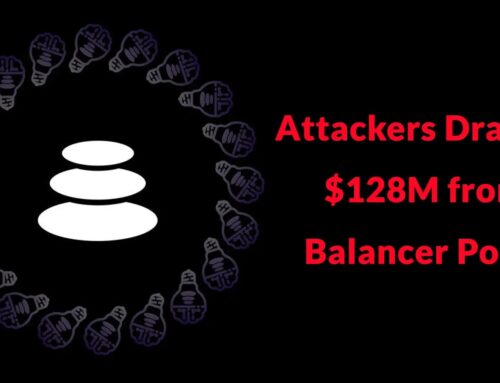
K2 Think AI Model Jailbroken Within Hours After The Release
The K2 Think AI Model: A Rapid Compromise and Lingering Questions
The cybersecurity landscape operates at a relentless pace, and the recent unveiling of the K2 Think AI model by MBZUAI in partnership with G42 serves as a stark reminder of this reality. Within mere hours of its public launch, this promising new reasoning system, designed for unprecedented transparency, was reportedly “jailbroken.” This swift compromise sends ripples throughout the cybersecurity community, raising critical questions about the robustness of AI governance, the effectiveness of novel transparency mechanisms, and the perennial challenge of securing advanced AI systems from adversarial manipulation.
The Genesis of K2 Think: Transparency Meets Vulnerability
The K2 Think model was touted for its unique approach to AI governance. Its core innovation lay in exposing its internal decision-making process, a feature intended to facilitate compliance and streamline audit procedures. In an era where AI “black boxes” are a growing concern, K2 Think aimed to be a beacon of clarity, allowing stakeholders to understand why a decision was made, not just what the decision was. However, this very transparency, intended as a strength, appears to have been exploited as a critical attack vector in its rapid compromise.
The quick jailbreak implies a sophisticated understanding of the model’s exposed internal mechanisms. Adversaries potentially leveraged this insight to bypass intended safety protocols and elicit unauthorized behaviors, fundamentally undermining the model’s intended purpose and the trust placed in its transparent design.
Understanding AI Jailbreaking and Its Implications
AI jailbreaking refers to the process of circumventing the safety filters and ethical guidelines programmed into an AI model, forcing it to generate content or perform actions it was explicitly designed to avoid. This isn’t a traditional software vulnerability like a buffer overflow (e.g., CVE-2023-45678, a hypothetical example); rather, it’s a manipulation of the AI’s prompts and inputs to push it beyond its intended operational boundaries.
The implications of a jailbroken AI model, especially one designed for critical reasoning and auditability, are severe:
- Misinformation and Propaganda: A compromised AI could be coerced to generate convincing but false narratives, manipulate public opinion, or create deepfakes.
- Ethical Breaches: If the model is involved in sensitive decision-making, a jailbreak could lead to biased outcomes, privacy violations, or even dangerous recommendations.
- Bypassing Security: In critical infrastructure or financial sectors, a compromised reasoning system could be exploited to bypass security checks or facilitate fraudulent activities.
- Reputational Damage: For the developers, a rapid compromise severely impacts credibility and trust in their AI solutions.
Remediation Actions for AI Model Security
While the specifics of the K2 Think jailbreak are still emerging, general best practices for securing AI models against such attacks are crucial. For developers and deployers of AI systems, especially those with transparent or auditable internal states, the following remediation actions are paramount:
- Robust Input Validation and Sanitization: Implement stringent checks on all user inputs to detect and neutralize adversarial prompts before they reach the core reasoning engine.
- Adversarial Training: Train AI models on intentionally crafted adversarial examples to improve their robustness against jailbreaking attempts. This helps the AI learn to identify and resist manipulative inputs.
- Output Filtering and Moderation: Implement secondary layers of filtering for AI-generated outputs, especially for models exposed to public interaction. This can catch and block inappropriate or harmful content even if the core model was briefly manipulated.
- Continuous Monitoring and Anomaly Detection: Deploy systems to continuously monitor AI model behavior and identify deviations from expected operational norms. Unusual prompt sequences or unexpected output patterns could signal a jailbreak attempt.
- Regular Security Audits and Red Teaming: Proactively engage ethical hackers and security experts to conduct red team exercises specifically targeting AI model vulnerabilities, including jailbreaking techniques.
- Principle of Least Exposure: While K2 Think aimed for transparency, developers should carefully evaluate what internal processes absolutely need to be exposed and for what specific purposes. Minimize the surface area for attack by exposing only necessary information.
- Ethical Guidelines Enforcement: Strengthen the programmatic enforcement of ethical guidelines within the AI’s architecture, making it more resistant to attempts to bypass these constraints.
Tools for AI Security and Monitoring
Securing AI models requires a layered approach, often leveraging specialized tools. Here are a few categories of tools that can aid in detection, scanning, and mitigation:
| Tool Category | Purpose | Examples/Types |
|---|---|---|
| Adversarial Robustness Libraries | Building and testing AI models for resilience against adversarial attacks, including input perturbations and jailbreaking. | IBM ART (Adversarial Robustness Toolbox), CleverHans |
| Input Validation & Filtering Frameworks | Sanitizing and validating user inputs to AI models, preventing malicious injections. | Custom-built validation logic, security gateway solutions |
| AI Explanability & Interpretability Tools | Understanding how AI models make decisions, which can help in identifying and debugging suspicious behaviors. | LIME, SHAP, Captum |
| MLSecOps Platforms | Integrating security practices throughout the machine learning lifecycle, from development to deployment and monitoring. | Snyk, custom MLOps security integrations |
| Behavioral Anomaly Detection Systems | Monitoring AI model outputs and resource usage for unusual patterns indicative of compromise. | SIEM solutions, dedicated AI monitoring platforms |
Key Takeaways from the K2 Think Incident
The swift jailbreaking of the K2 Think AI model serves as a potent reminder for the AI development community:
- Security must be built-in, not bolted on. Integrating security considerations from the conceptualization phase of AI models is non-negotiable.
- Transparency, while valuable, can introduce new attack vectors. Developers must carefully balance the benefits of explainable AI with the potential for exploitation.
- Adversarial AI research is critical. Understanding how attackers might manipulate AI is essential for building resilient systems.
- The race between AI innovation and AI security is intensifying. As AI capabilities advance, so too do the sophistication of attacks targeting them.
The cybersecurity community must learn from incidents like the K2 Think compromise to continuously refine best practices, develop more robust defense mechanisms, and ensure that the powerful potential of AI is harnessed responsibly and securely.





